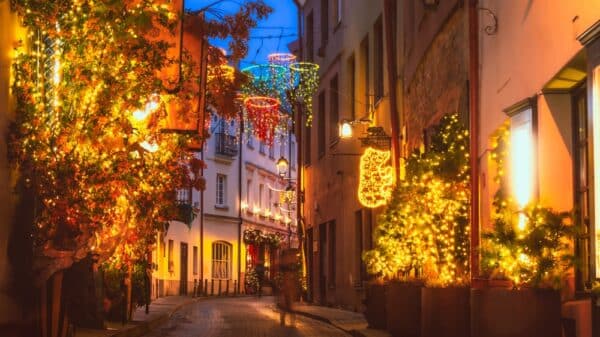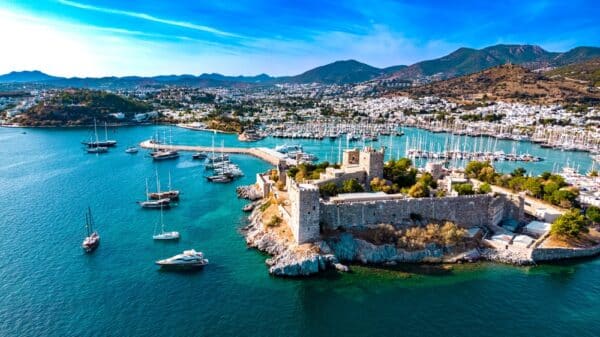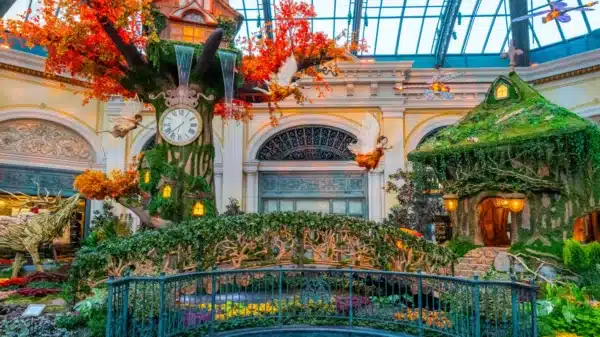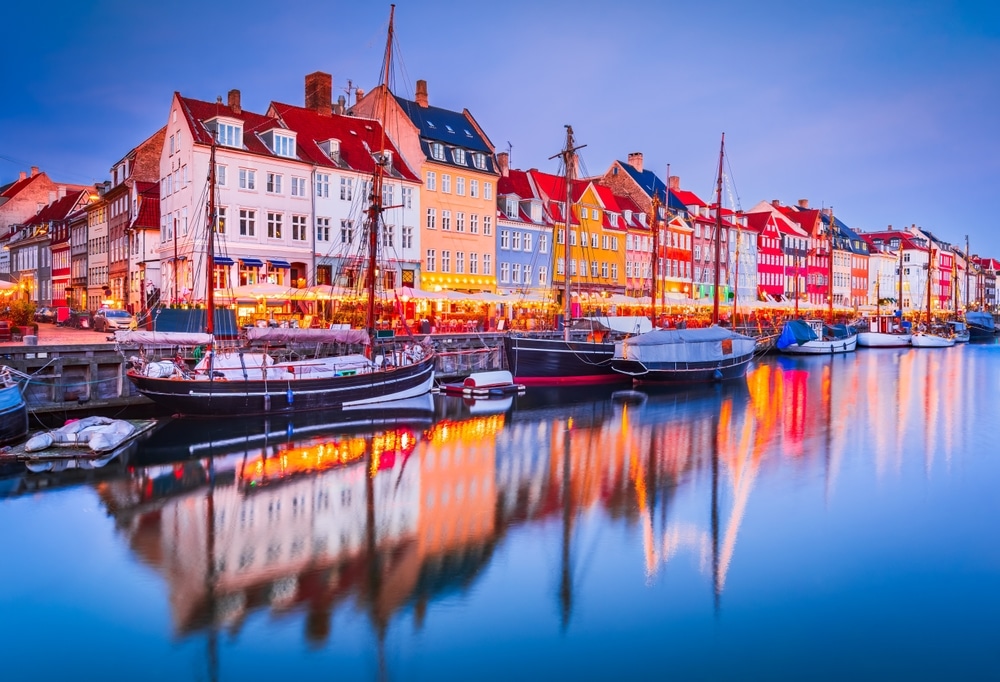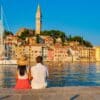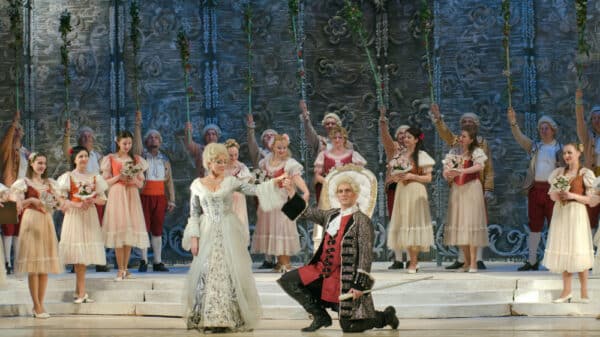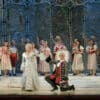Copenhagen’s captivating blend of Nordic architecture, breathtaking coastal views, and regal palaces typically holds the spotlight in Denmark’s capital. However, beneath this contemporary veneer lies a rich literary tradition that adds another layer to the city’s allure. For those who love literature, exploring Copenhagen’s connections to fairy tales, women writers, and even Shakespeare unveils a treasure trove of experiences.
Discovering Copenhagen’s Literary Landscape
As a passionate reader and member of a book club, I’m often drawn to destinations that resonate with the literary figures I admire. To my delight, Copenhagen revealed an array of literary attractions, quaint bookstores, and invitation-only libraries. Each site encapsulates the essence of Denmark’s literary heritage.
The city’s crown jewel when it comes to literature is undoubtedly the century-old bronze statue of The Little Mermaid, inspired by Hans Christian Andersen’s enchanting 1837 fairy tale. Elegantly perched on a rock by the harbor, she beckons millions of visitors via bus or boat each year, embodying the spirit of Andersen’s timeless tales.
Throughout the city, one can find various statues dedicated to Andersen himself, recognizing the impact of this prolific storyteller whose beloved children’s narratives continue to inspire classic adaptations, most famously within Disney’s portfolio. A visit to the modern Black Diamond, an architectural marvel that complements the historic Royal Danish Library, allows access to Andersen’s diary, a personal glimpse into his life and creativity.
A Journey Beyond the City Limit
Copenhagen is not just home to Andersen. A short train ride reveals further literary treasures that honor Denmark’s cultural heritage. I took a daytrip north to visit the Runsted estate of Karen Blixen—famed for her memoir Out of Africa, which later transitioned to an Oscar-winning cinematic portrayal—and Kronborg Castle in Helsingor, the storied setting of Shakespeare’s Hamlet.
Exploring the Danish Riviera
Reaching these sites is easy, as both are less than an hour’s journey via the Coast Train from Copenhagen Central Station to Helsingor. This scenic route hugs the Oresund Strait, a dividing line between Denmark and Sweden known as the Danish Riviera. While cycling along its picturesque bike paths is usually a delight, the rainy weather encouraged us to take the train instead.
Upon arrival at Rungsted, we donned our umbrellas and strolled along a clearly marked trail under a lush canopy of beech and oak trees at Rungstedlund, Blixen’s 40-acre estate. The estate features a museum, a café, and even a bird sanctuary, making a one-mile walk through nature both refreshing and rejuvenating.
Inside Karen Blixen’s World
Born in 1885, Karen Dinesen, who would later adopt the pen name Isak Dinesen, called Rungstedlund home during her formative years. After spending nearly two decades in Kenya managing a coffee farm, she returned to Denmark to reinvent herself as a writer. Her poignant stories—such as Out of Africa and Seven Gothic Tales—secured her a permanent place among Denmark’s literary titans and garnered her multiple nominations for the Nobel Prize in Literature.
The museum, established in 1991, remains remarkably akin to the home she left behind, showcasing personal artifacts like her youthful sketchbooks and portraits. Exhibits also reflect her time in Kenya, including Masai artifacts and hunting memorabilia that paint a vivid picture of her life during a transformative era.
Blixen’s literary journey didn’t begin until she was 48, yet once it did, she produced some of the most lyrical prose of her time. Visitors can pay tribute at her grave, elegantly situated beneath a 300-year-old beech tree, before making their way further north on the train.
Kronborg Castle: Shakespeare’s Elsinore
Our exploration continued with a walk from Helsingor’s enchanting railway station along the harbor, catching glimpses of ferries traversing the strait. Ahead, we could see Kronborg Castle, a resplendent example of Renaissance architecture and a historic site that has long captivated both history enthusiasts and Shakespeare aficionados.
Constructed in the 15th century, Kronborg Castle served as a toll collection point for passing ships, helping to solidify Denmark’s economic power. Today, as a UNESCO World Heritage Site, the castle enchants visitors with its well-preserved moat, towering sandstone walls, and timeless ramparts. Its grand ballrooms and royal chambers likely inspired Shakespeare to place Hamlet within its storied walls. Wandering through its echoing halls, one can sense the lingering presence of the tragic Danish prince.
During summer, actors perform Hamlet in the castle’s courtyard, reviving the tales of tragedy and revenge that continue to resonate today. Guided tours shed light on local legends and the mythical stone warrior, Holger the Dane, said to awaken when Denmark faces danger. Although whether Shakespeare himself ever graced these grounds remains an enigma, the dramatic atmosphere leaves a lasting impression.
Embracing Literary History
As we ambled back through Helsingor’s cobblestone streets, flanked by medieval architecture, it became clear that the stories of Andersen, Blixen, and Shakespeare—spanning genres from fairy tales to profound tragedy—imbue Copenhagen and its surrounding areas with a literary richness that stands out in a traveler’s experience.
With literature at the heart of Denmark’s cultural legacy, a literary-themed journey through Copenhagen is sure to be one that both book lovers and casual visitors will cherish. The Copenhagen Card provides convenient access, bundling both transportation and admission to Kronborg and the Blixen museum, ensuring a smoothly curated experience.
In summation, Copenhagen’s literary landmarks are more than mere sites; they are gateways to the lives of remarkable storytellers whose works have transcended time and geography. Whether you are a die-hard literary fan or a curious traveler, exploring these sites will undoubtedly enrich your visit to Denmark.

